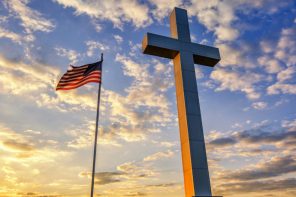The deadline came, and the deadline passed. Last Sunday, February 12, was the final day religious groups were able to hold services in New York City public schools, marking the culmination of a battle that began back in 1994. Despite protest efforts and hopes of intervention from the state legislature, the June 2011 U.S. appeals court ruling stood, causing at least 60 congregations to find new homes.
Many of the news reports published in the months leading up to the ban focused on Bronx Household of Faith, the evangelical church that initiated public-school worship in the city in 2002. A few pieces, including Katherine Stewart’s for RD, mentioned that in the years since, a range of church-planting organizations had also taken advantage of the no- or low-cost access to space in an overpriced and overcrowded city. What flew under the radar, however, is that some of the congregations that gathered in public schools—Park Slope Presbyterian and The Journey to name a couple—could be characterized as hipster churches.
That detail isn’t particularly groundbreaking in itself, but it does shed light on a larger trend among hipster churches—namely the focus on worshipping in urban spaces, public spaces, that aren’t their own. While some still meet in schools in other cities, most can be found in movie theaters and music venues, in coffee shops and bars and nightclubs, in cultural centers and communal working spaces.
It’s a defining characteristic of such churches, marking a clear shift in worship style, and designed to attract young evangelicals who yearn for anything that seems unlike the Christianity they grew up with, for a church they can call their own. These spaces are not only blank canvases on which new churches are able craft their own identities, but they are also venues where their targeted demographic feel at home—whether for church, for a concert or an event, or for a night out with friends.
For hipster churches, these social and cultural venues are the public schools of their more traditional counterparts—churches that are more focused on the culture wars and, as a result, have a bigger investment in being immediately visible to children and families. The use of public schools for services may now be off-limits in New York City, but the use of other public spaces to help spread the gospel is thriving. Reminiscent of the coffeehouse churches that preceded them (which apparently were what lured the founders of Bronx Household of Faith to New York City in the first place), the theaters and the bars and the concert halls are not just cool and comfortable new spots to worship, but they are the current battleground of the evangelical struggle for the young, hip soul and, ultimately, for the cities in which they dwell. Unlike with public schools, the constitutionality of using these spaces for worship won’t be challenged, but, as the pattern goes, they will eventually lose their cool, leaving us to wonder where will be next.




